29+ Self-Appraisal Examples to Download
When a person works in a specific position or job, they will need to have access to specific soft skills, hard skills, characteristics, and other elements to maintain that position or raise through the corporate ladder. One of the best ways the person can check and determine the competency of their skills is through the usage of a self-appraisal.
1. Self-Assessment Template
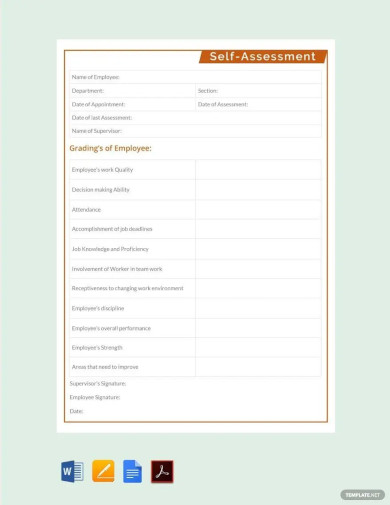
2. Letter Template

3. Report Template
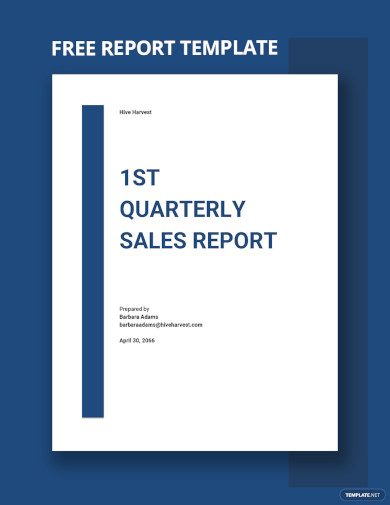
4. Sample Self Appraisal Example
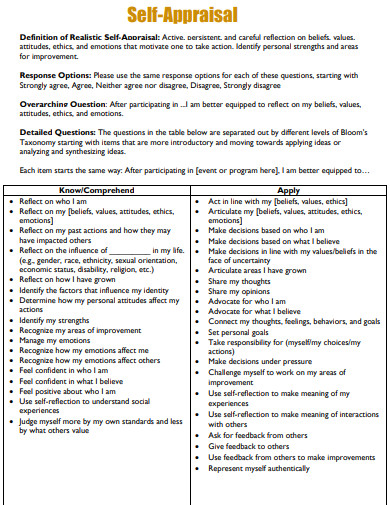
wmich.edu
5. Employee Self Appraisal Example
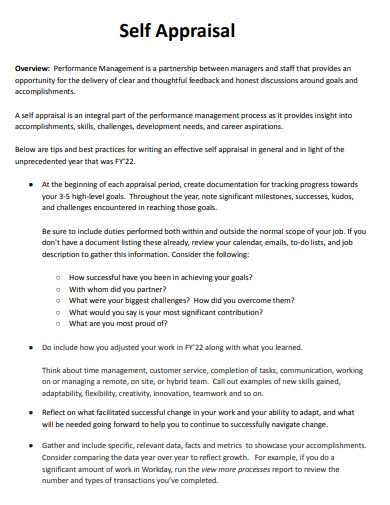
brown.edu
6. Self Appraisal Template
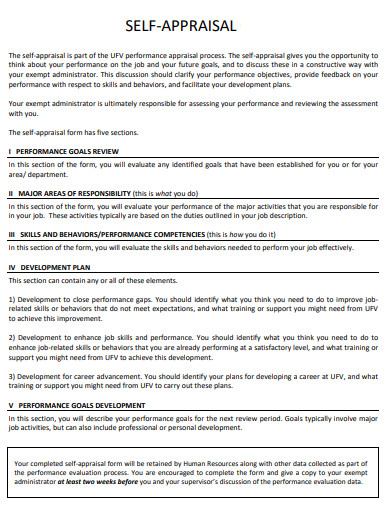
ufv.ca
7. Self Evaluation Example
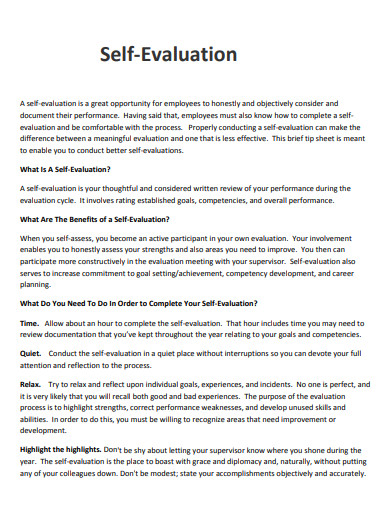
hr.virginia.edu
8. Self Appraisal Performance Example
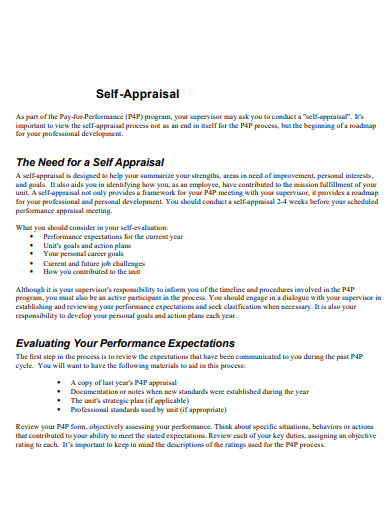
oirap.rutgers.edu
9. Self Appraisal Form Example
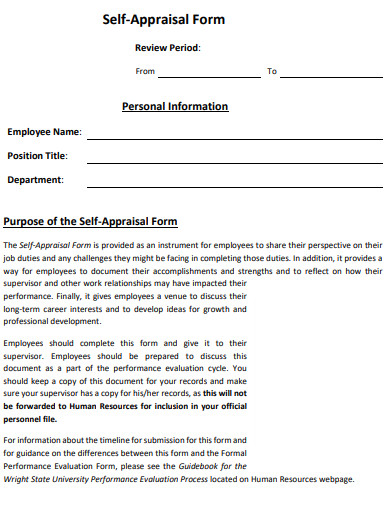
wright.edu
10. Self Appraisal of Teacher Example
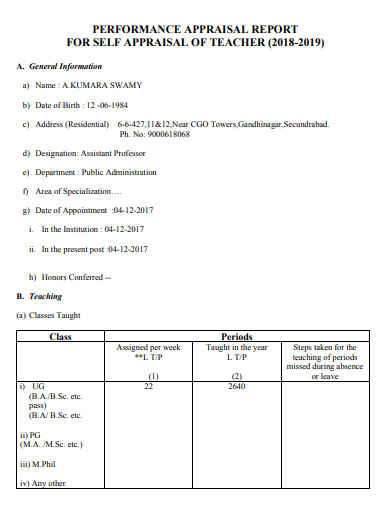
sfc.ac.in
11. Work Self Appraisal Example
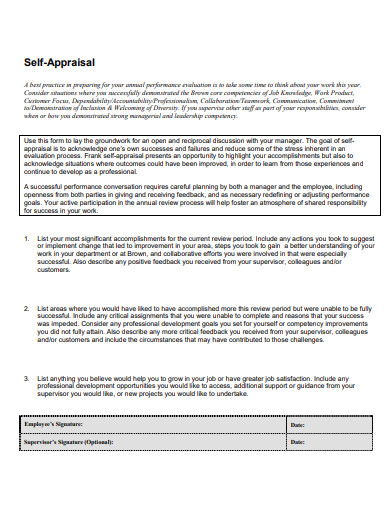
brown.edu
12. Self Assessment Example
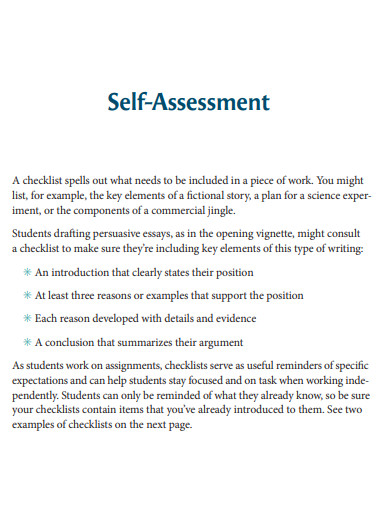
responsiveclassroom.org
13. Student Self Appraisal Example

files.eric.ed.gov
14. Software Engineer Self Appraisal Example
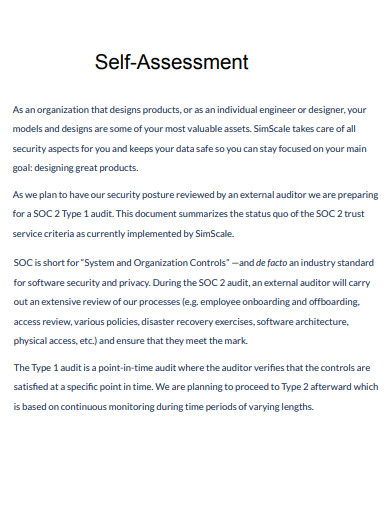
explore.simscale.com
15. Manager Self Appraisal Example
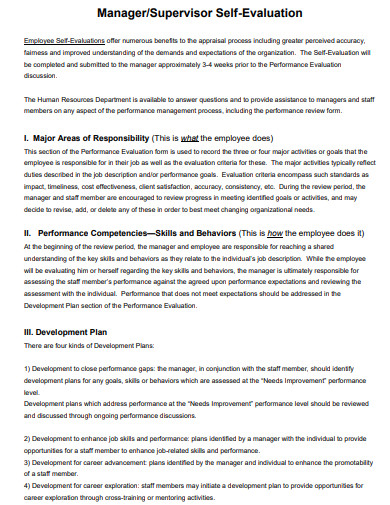
cgcc.edu
16. Writing Self Appraisal Example
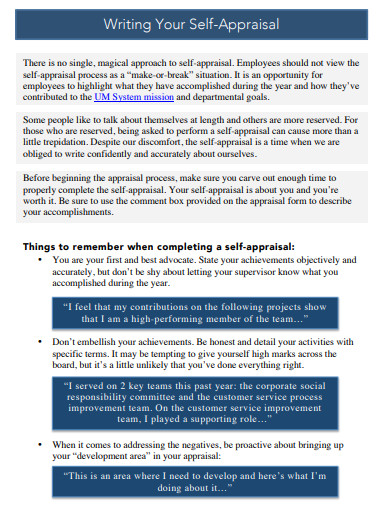
collaborate.umsystem.edu
17. Self Appraisal Review Example
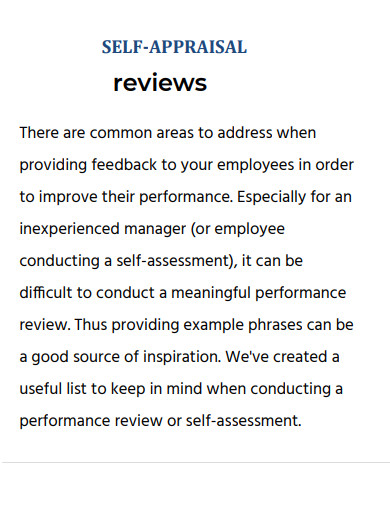
assets.ctfassets.net
18. Self Appraisal Format

sjcc.edu.in
19. Self Appraisal Software Developer Example
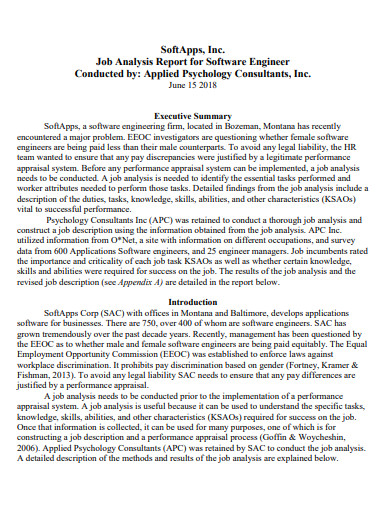
home.ubalt.edu
20. Self Appraisal Report Example
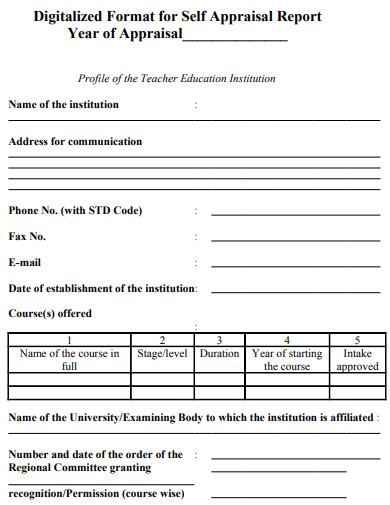
ncte.gov.in
21. Self Appraisal Staff Example
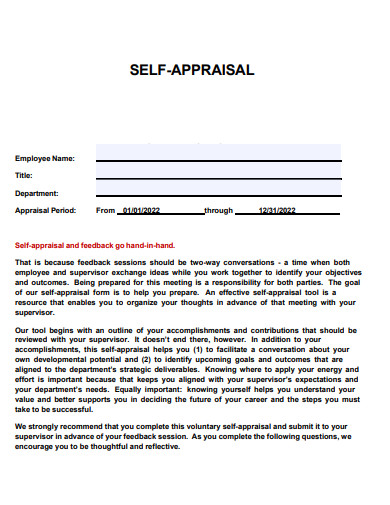
chapman.edu
22. Self Appraisal Bank Employee Example
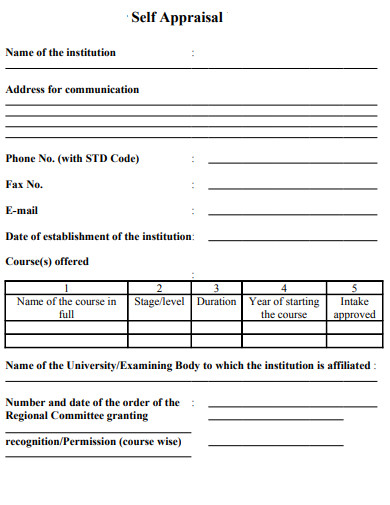
ncte.gov.in
23. Self Appraisal Nursing Example
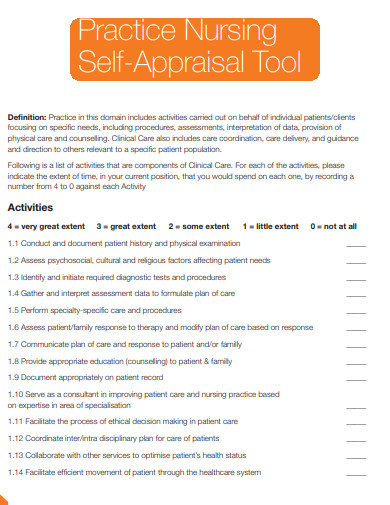
eprints.qut.edu.au
24. Self Appraisal Supervisor Example
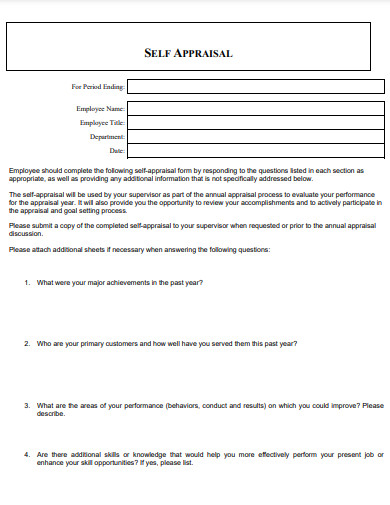
hr.utexas.edu
25. Self Appraisal for Promotion Example

web.pdx.edu
26. Self Appraisal Questionaire Example
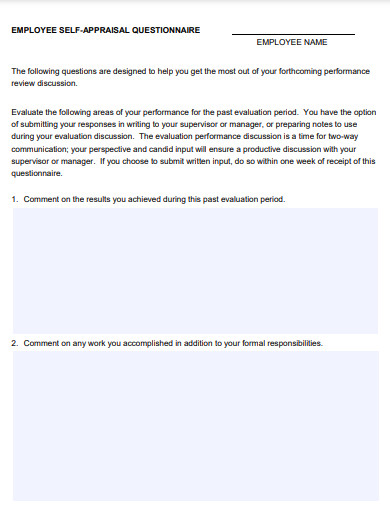
csusm.edu
27. Blank Self Appraisal Example
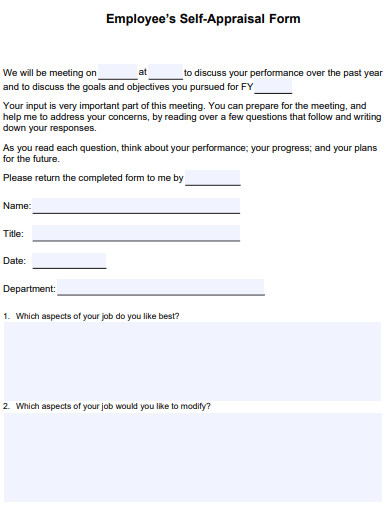
uhv.edu
28. Self Appraisal Communication Example

eloncdn.blob.core.windows.net
29. Customer Service Self Appraisal Example
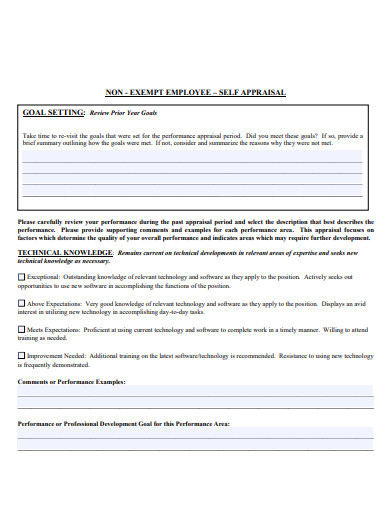
web.wpi.edu
30. Annual Self Appraisal Example
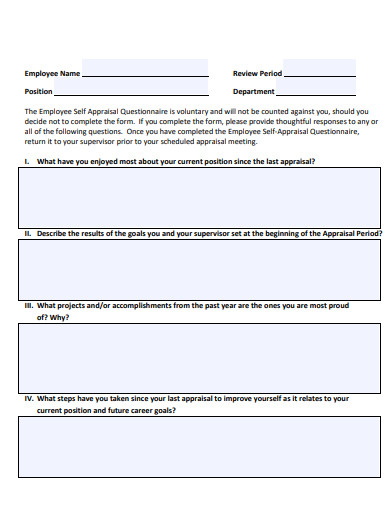
chinoaz.net
What Is Self-Appraisal?
Self-appraisal is a tool people use to conduct a quick assessment of one’s performance and attitude in the workplace against the current standard of the position they hold. This tool will also allow the person to explore various sentiments they have with their performance in the context or theme of their current workload.
A well-conducted self-appraisal will require the person to be able to have some self-awareness of their own goals, objectives, attitude, and behavior in the workplace. If you need various resources or references on the topic of self-appraisal, then you may use any of the self-appraisal examples, samples, and templates on the links above. If one wants to conduct a self-appraisal, one can easily accomplish this task by opting to use a self-appraisal outline or outline format. This outline will provide you with the necessary structure and elements to ensure that you will have a complete self-appraisal. Start by gathering data on the various accomplishments and goals you have completed during your time in the position. You can write a bulleted list in the self-appraisal that will collate all of the information and data you have gathered. It is important to write down mistakes and roadblocks you have encountered during your time working in your current position. This will help you realize the various mistakes you have made and will allow you to create processes to minimize or prevent the occurrence of these mistakes in the future. A good self-appraisal is objective. This means that the information listed in the self-appraisal is factual, which means that people will agree with the information in the self-appraisal. Get second opinions from other people that you trust.How to Conduct a Self-Appraisal
Step 1: Obtain a Self-Appraisal Outline
Step 2: Gather Data on Your Accomplishments and Goals
Step 3: Reflect on One’s Mistakes and Roadblocks
Step 4: Obtain Second Opinions From Related People
FAQs
The person who wants or needs the self-appraisal will be the one to use this tool. The self-appraisal will only describe the person writing and making the self-appraisal.Who should do the self-appraisal?
The point of the self-appraisal is to gauge whether the person has adequate knowledge and comprehension of the impact and effort they contribute to the company. Not only that, but it also helps provide a reference point of the image the individual sees, when they write the self-appraisal.What is the point of self-appraisal?
Self-appraisals should include all the occurrences, wins, and losses the person has faced during their time working in the position they hold. Therefore the person needs to include the mistakes they make in their self-appraisals.Why should I include my mistakes in the self-appraisal?
Self-appraisal is a tool people use to identify and define their contributions, behavior, accomplishments, and performance in the current position they hold. The person needs to know how to properly make a self-appraisal to improve the effectiveness of this tool.


